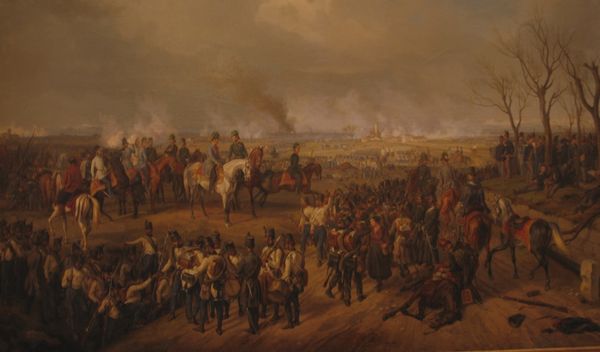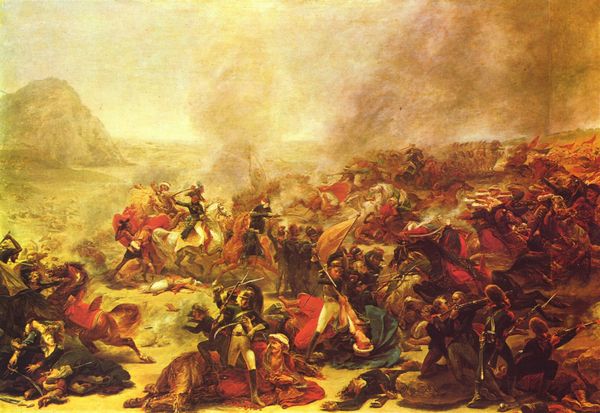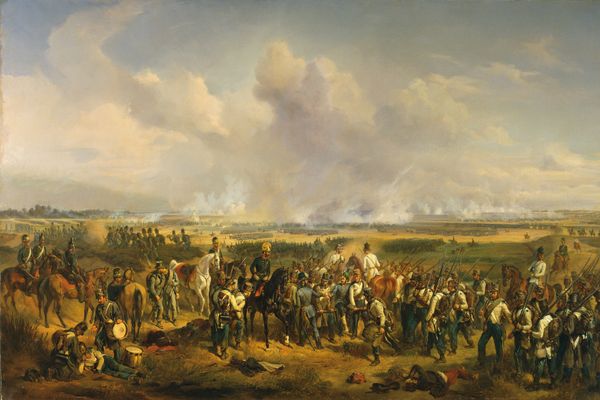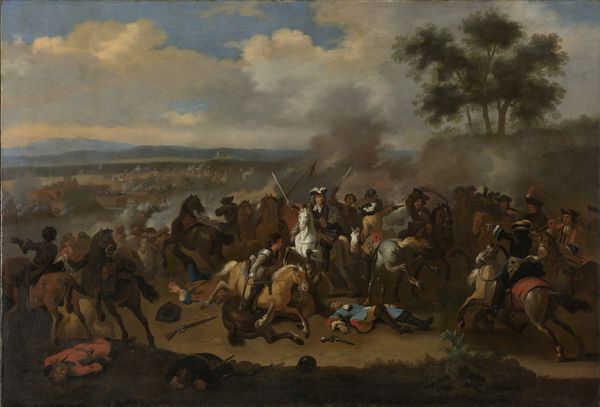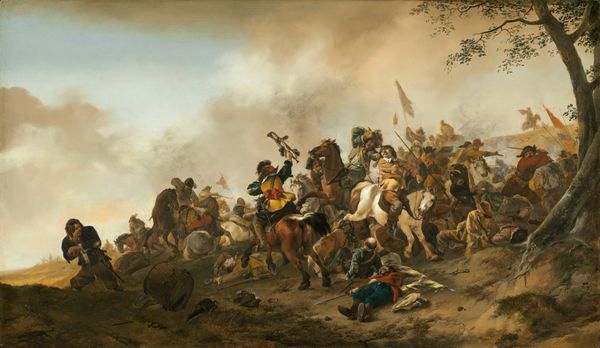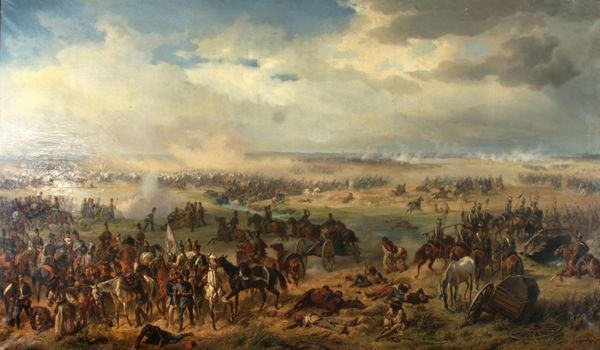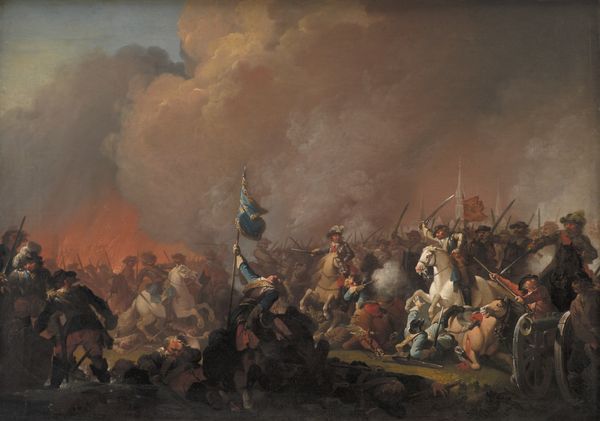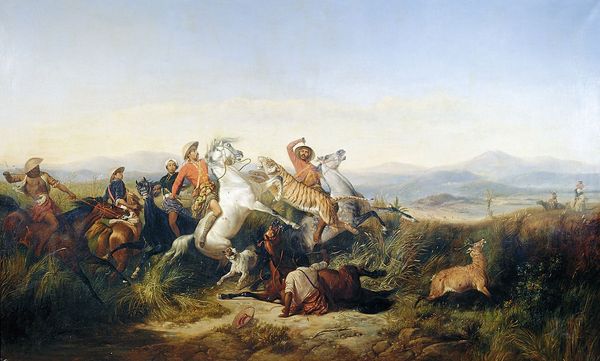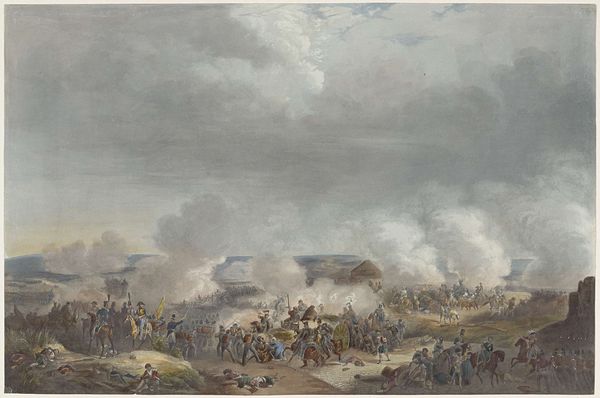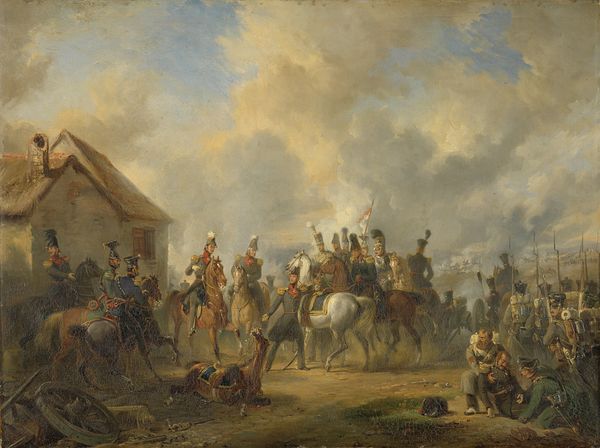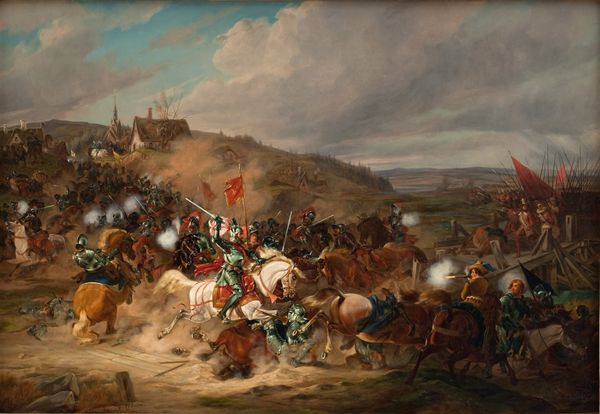
Copyright: Public Domain: Artvee
Curator: Before us hangs "The Battle of Tetouan," a monumental oil on canvas created by Mariano Fortuny between 1862 and 1864. What are your initial impressions? Editor: It feels overwhelming. The sheer busyness of the composition creates a sense of chaos. The horizon line is almost imperceptible, forcing the viewer to focus on the disarray in the foreground. Curator: Absolutely. Fortuny intended to capture not just the visual spectacle of the battle, but also the ideological underpinnings of Spanish colonialism in Morocco. He was commissioned to document this military victory, framing it within a narrative of national pride and imperial power. But the way that chaos translates onto the canvas certainly has its effects. Editor: Focusing on the formal aspects, one can't help but notice how the artist uses earth tones and muted colors to depict the landscape, contrasting sharply with the bright reds and whites of the soldiers' uniforms. It’s almost a classical choice, but applied to such a hectic modern subject. What’s particularly interesting to me is how the composition guides the viewer's eye from the detailed foreground towards an almost blurred background, mimicking the confusion and movement inherent in battle. Curator: Exactly. The blurring acts, I think, to obscure some of the human cost. Fortuny’s patron hoped this depiction would celebrate Spain’s imperial might, glossing over the violence and exploitation inherent in colonial conquest. How does one represent warfare as glorious instead of devastating? This blurring feels like a cop-out. Editor: I see that, but even still—consider how he breaks up the linear expanse using compositional devices like layering, smoke plumes, and varying ground textures to create depth. It shows he gave careful attention to guiding the viewer across the entirety of the scene. It keeps your attention. Curator: True, there is immense skill involved in its execution. And one shouldn't ignore that, as a work of art produced in its time, it speaks volumes about how nations like Spain actively reshaped historical events in ways that further cemented specific cultural agendas. Fortuny may have focused on pictorial strategies but that, too, serves as evidence in this war’s portrayal. Editor: A striking work, whichever perspective one adopts. I certainly find new points of interest. Curator: It reminds us how paintings participate in historical discourse; visual choices, like strategic omissions, create complex representations of power, identity, and memory. A single picture is truly worth a thousand words in this context.
Comments
No comments
Be the first to comment and join the conversation on the ultimate creative platform.


